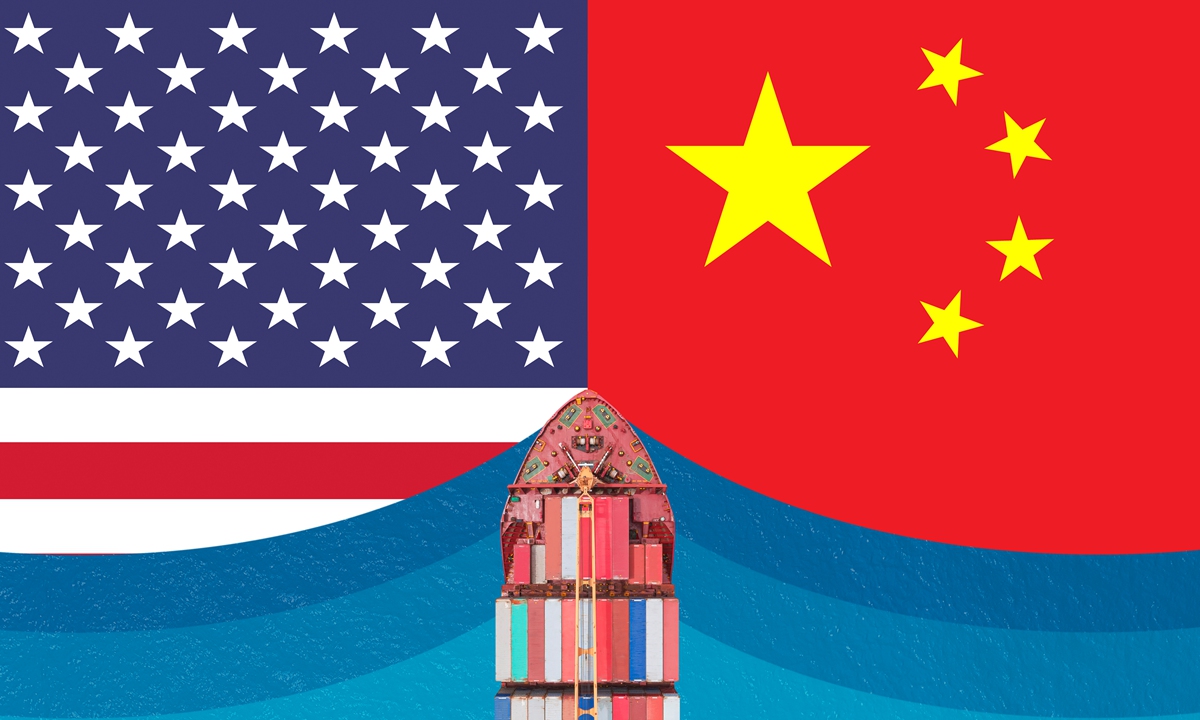
China-US Graphic: GT
The US’ latest move in extending tariff exclusions on 352 Chinese import categories has sent positive signs as it is beneficial to normalizing bilateral trade and helping trade ties get back on a normal track, Chinese experts said, while urging Washington to scrap all punitive tariffs on Chinese products that are unreasonable.
The Office of the United States Trade Representative (USTR) announced on Friday a nine-month extension of 352 product exclusions in the China Section 301 Investigation that had been scheduled to expire at the end of 2022. The products ranged from pumps and motor vehicle components to backpacks.
The exclusions were initially reinstated on March 28, 2022, and the extension will help align further consideration of the exclusions with the ongoing comprehensive four-year review of the Section 301 tariffs imposed by former US President Donald Trump on some $350 billion worth of Chinese imports, according to the website of the USTR.
“The USTR may consider further extensions and/or additional modifications as appropriate,” it said in a statement.
The extended tariff exclusion indicated the US’ reliance on Chinese-made products, especially when the US is addressing challenges such as elevated inflation and the pandemic, and it once again proved that ‘decoupling’ is not practical, Gao Lingyun, an expert at the Chinese Academy of Social Sciences in Beijing, told the Global Times on Sunday.
“The US is sending some positive signals in normalizing bilateral trade — meanwhile, we should bear in mind that we want the US to scrap all the punitive and unreasonable tariffs as soon as possible,” Gao said.
In November, the USTR extended tariff exclusions for some Chinese medical products, including pump bottles for hand sanitizers, plastic containers for sanitizing wipes, blood pressure monitors and X-ray tables, for an additional three months in order to continue to fight the COVID-19 pandemic in the US.
The repeated extensions of tariff exemptions showed that the unreasonable US trade sanctions on China are untenable, Gao noted.
China-US trade growth slowed to 4.8 percent year-on-year in the first 11 months of the year, compared with 6.8 percent growth from January to October, data from Chinese customs showed earlier this month.
Slower export growth in November came as a result of US interest rate hikes, which have tempered domestic demand, expert said.
“As US rates are expected to fall next year, US consumers will release more pent-up demand, which is beneficial in driving our exports,” Gao noted.
China-US trade is still likely to hit a new high in 2022 despite the ongoing US trade war. Trade between China and the US soared by 28.7 percent to hit $755.6 billion in 2021, maintaining strong growth momentum and contributing 12 percent to China’s record $6 trillion foreign trade volume last year.
“We will implement the important consensus reached by the two heads of state at their meeting, and we hope that the US will work with China to push bilateral economic and trade cooperation back on the path of steady and sound development,” Shu Jueting, a spokesperson of the Ministry of Commerce, told a press conference in November.
Global Times




